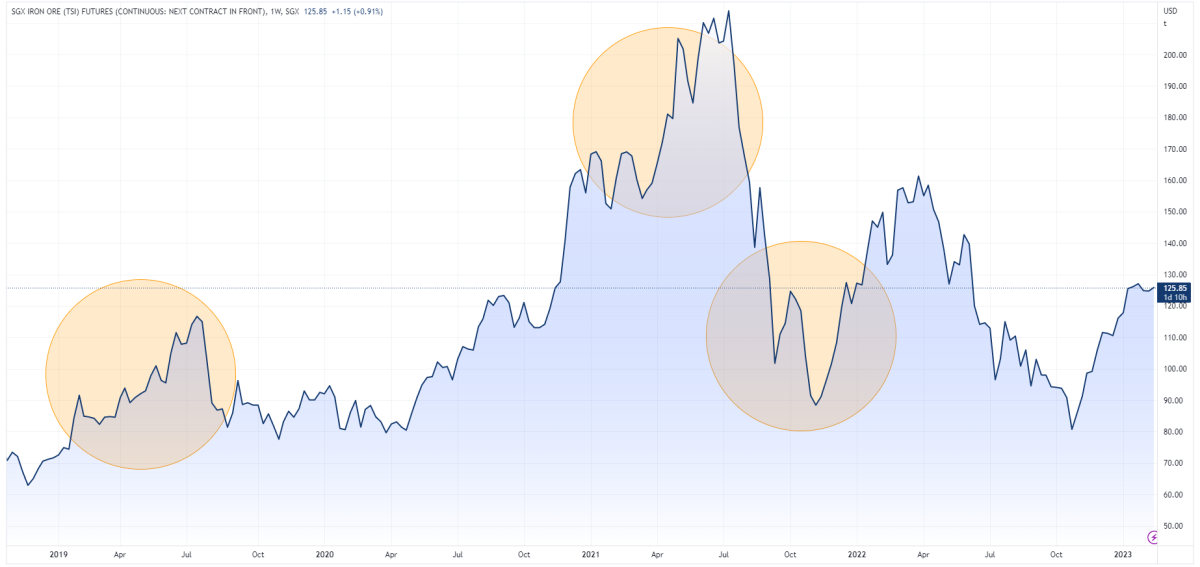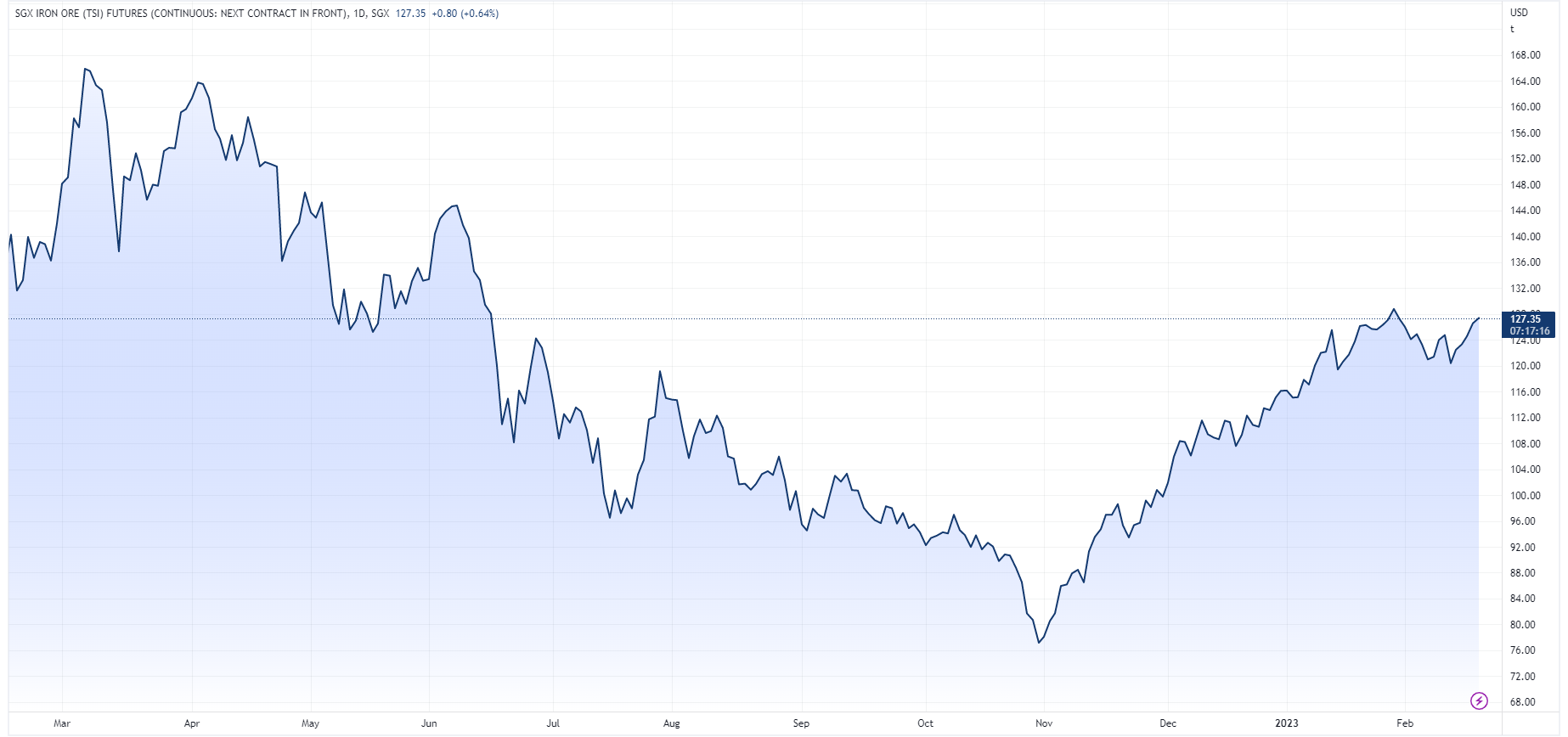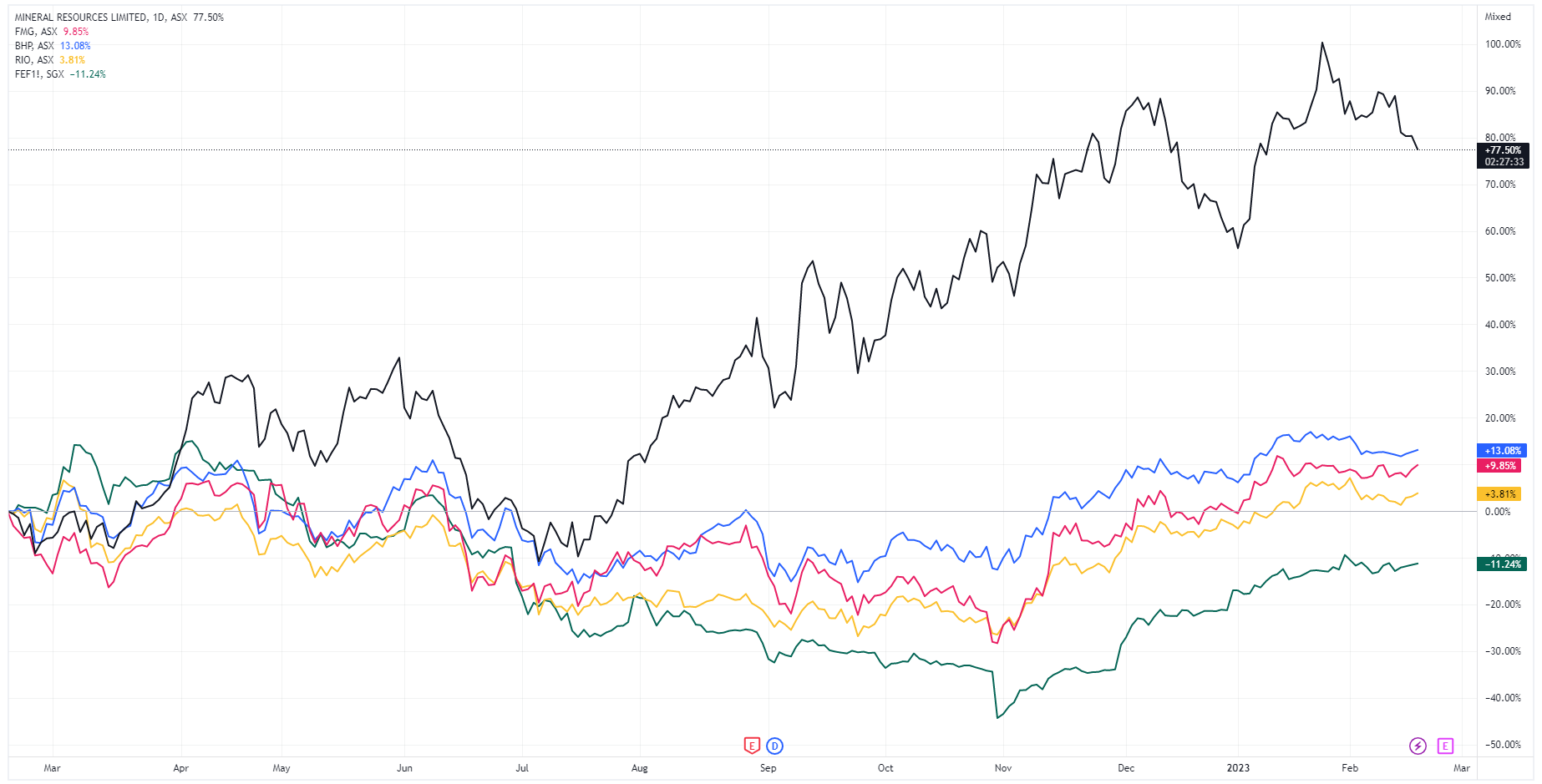Iron Ore: A concise guide for ASX investors
Iron ore – It’s one of the world’s most important raw materials, Australia’s largest export and its miners take up a big chunk of the ASX 200.
In this article, we will provide a concise guide to iron ore for investors, including a brief overview of the commodity, factors that influence its price, where prices may head in the short-to-medium term and ASX-listed iron ore companies.
Iron ore: An overview
Iron ore types: There are several types of iron ore including hematite, magnetite, and limonite, which differ in their iron content and iron oxide composition. Hematite is the most common type with high iron content of approximately 70%. It is the primary source of iron ore production in Australia and typically found in Western Australia. Magnetite is less common, with a lower iron content of around 60% and limonite has even lower content.
Understanding grades: Not all iron ore is made equal. Iron (Fe) grades typically range between 58% (low grade) to 65% (high grade). High grade iron ore requires less processing which makes it a more efficient and cost-effective raw material. It also produces less emissions.
Understanding prices: Iron ore prices are benchmarked to grades of 62%. You’ll then see iron ore miners sell iron ore typically at a discount or premium to that price – depending on what kind of grades they’re producing.
All about steel: Approximately 98% of iron ore is used to produce steel and the majority of that goes towards the construction industry. Other industries that use iron ore include the automotive, shipbuilding and railway industries.
Iron ore: Demand and supply
The world’s largest exporter: Australia exports approximately 53% of the world’s iron ore supply, which contributed around $133bn in export earnings in 2021-22, according to the ABS.
All about China: China is the world’s largest iron ore consumer, responsible for approximately 62% of global consumption, according to the Resources and Energy December Quarterly 2022.
Surplus and deficits: The iron ore market is typically quite balanced in terms of supply and demand. That's why factors such as changes in production levels, shifts in global demand and fiscal stimulus can dramatically move prices. Some examples include (periods highlighted in price chart):
- January 2019: A catastrophic collapse of the tailings dam owned by Vale, the world's largest iron ore miner. Vale was forced to shut down several of its iron ore mines in the region, which caused a significant drop in iron ore supply
- Q1-2 2021: Iron ore prices hit all-time highs amid supply tightness from Australia and Brazil (Covid-related). China was aggressively funding new infrastructure projects and deploying more government support. In the March quarter 2021, China's steel output was up 14% YoY
- Q3-4 2021: China faced a severe power crisis, with more than half of its 31 provinces required to implement power rationing from September. This took a massive toll on manufacturing and industrial output.

Iron ore: Price Drivers
All about China Pt 2: Sometimes, iron ore just feels like a proxy for the Chinese economy. Of course, supply side factors such as Vale's dam collapse or extreme weather conditions in Western Australia can have an impact on near-term prices. But ultimately, it's all about China. So here are a few factors to consider:
Speculation: Even iron ore can trade like a speculative asset sometimes. Between late October 2022 and mid January 2023, iron ore prices rallied more than 50% to US$125 a tonne. This rally was on hopes of a full Chinese reopening. Over the same time period, China's manufacturing PMIs were still in contraction.
Real Estate & Construction: China's building and construction sector consumes approximately 60% of domestic steel demand. Evergrande's collapse in June 2021 (which then dragged the broader Chinese real estate sector down) was one of the main reasons why iron ore experienced such a volatile correction from US$210 a tonne in July 2021 to US$90 a tonne by November 2021
- March 2021: A draft document was released for restrictions to be imposed on the China's biggest steelmaking hub Tangshan. This included seven steel mills to lower emissions by 50% from March to June
- October 2021: Tangshan was ordered to cut steel production to tackle worsening air quality, forcing approximately 19,000 tonnes a day of capacity to close for a week, according to S&P Global Platts
The story so far
Iron ore prices are up almost 70% from October 2022 lows amid a full Chinese reopening after three years of zero-Covid policy. The price rally is in part speculative in nature as recent economic data has yet to point towards a full recovery.
China's manufacturing purchasing managers index (PMI) inched up to 49.2 in January from December's three-month low of 49.0 but marks the sixth consecutive month of contraction. The 50-point mark separates contraction from expansion.
On Friday 17 February, China issued its biggest-ever cash injection of US$121 billion. There's plenty of talk, now the fundamentals need to walk the walk.

Iron ore price outlook
The Australian Government's commodity forecaster, the Office of the Chief Economist (OCE) expects iron ore prices to average US$85 a tonne in 2023 and fall to US$75 a tonne by 2024.
"A stabilisation of China’s real estate sector, in combination with the country’s substantial infrastructure stimulus and only modest supply growth from Australia and Brazil, is expected to provide support to steel and iron ore prices over the outlook period," the OCE said in its December quarter report.
"In 2024, iron ore prices are projected to decline toward (lower) longer-run levels. This follows more modest growth in blast-furnace steelmaking (compared with the past decade) from major producers such as the EU, US and China, as the world undergoes a transition to a low emissions environment."

Now let's move on to some stocks!
The three heavyweights
BHP (ASX: BHP), Fortescue (ASX: FMG) and Rio Tinto (ASX: RIO) dominate the conversation about iron ore stocks. In this section, we’ll take a look at how much iron ore accounts for Group revenues, production costs and broker views.

Fortescue: 6 brokers (Morgans, Macquarie, Citi, UBS, Credit Suisse and Morgan Stanley) released Sell-rated notes for Fortescue with an average price target of $16.98 on 30 January. The bearish views were mainly due to the stock's ~50% rally between late October 2022 and January 2023. As well as concerns that China's reopening had already been priced-in.
BHP: In January, there were six broker views about BHP (four Neutral, one Outperform and one Sell). The average price target was $44.00. Bullish talking points include: A better-than-expected second-quarter production and ramp-up at South Flank. Bearish talking points include higher operating costs, recession risks and tightness in the WA labour market.
Rio Tinto: Rio Tinto attracted the greatest disparity among major brokers. In January, with one Sell, two Buys and three Neutral rated notes in January. The average price target was $115.83.
The odd one out
Mineral Resources (ASX: MIN) doesn't quite fit into the iron ore picture given its diversified exposure to mining services and lithium. But it's still worth an honourable mention.
In terms of revenue spread: Mining services, iron ore and lithium contributed a respective 43.4%, 40% and 16.1% to Group revenues in FY22.
Brokers are generally positive on MinRes (four Buys and one Neutral) at the end of January. Although it's worth noting that the company's December quarter update cited weaker-than-expected iron ore production and lithium shipments. The average price target among brokers was $103.70.
The company's exposure to lithium has helped it outperform all of its large-cap peers on a 12-month basis, up 78% compared to 3-15%.

Mid-to-large cap miners
There are three names that sit around the $1-3 billion dollar mark: Champion Iron (ASX: CIA), Grange Resources (ASX: GRR) and Mount Gibson Iron (ASX: MGX). In this section, we'll take a look at the unique attributes of each company, their share price performances relative to heavyweights and any broker views.
Champion Iron is a Canada-based miner that produces a high-grade 66.2% Fe. To add some perspective, Fortescue's grades typically sit around 58-60% iron content while BHP's are around 60%. According to Champion Iron, its high-grade product can reduce blast furnace emissions by up to 10%. It's also working on a Direct Reduction Pellet Feed to produce 69% Fe to reduce emissions by up to 50%.
In late January, Macquarie was Neutral-rated with a $7.50 target price after CIA's third quarter result observed lower sales volumes and higher costs, which was only partially offset by higher prices.
Grange Resources operates one of Australia's largest integrated iron ore pellet projects in northwest Tasmania. The stock experienced an almost 50% derating last August due to weaker-than-expected half-year earnings and dividends. Its recouped roughly half the declines and doubled off lows of 60 cents (now trading at $1.00).
Mount Gibson operates two main iron ore projects:
- Koolan Island, a former BHP mine in WA that boasts grades of over 65% Fe. The project has approximately four to five years left of mine life
- Shine Iron Ore Project, another WA project that commenced sales in August 2021 but quickly deferred due to deteriorating market conditions. It's only recently resumed operations
Volatile iron ore prices and lower-than-expected iron ore grades resulted in a loss of $174.1 million in FY22. Though, the company is expecting a much better operational performance moving forward, underpinned by "growing high-grade iron ore production".
Note: No major stockbroking firms cover Grange Resources or Mount Gibson Iron
Smaller caps of interest
It might be surprising to see very few iron ore explorers relative to other commodities such as copper, gold and lithium. This is due to factors such as:
- Market demand: The demand for iron ore is much more stable and predictable than other minerals
- Cost of production: Extracting iron ore is typically less expensive than other minerals, which may lower the incentive to explore for new sources
- Availability: Iron ore is abundant and widely distributed around the world, whereas other minerals such as copper and lithium are often found in specific regions
- Technological advancements: Advances in technology have made it easier to extract, refine and reuse iron/iron ore
Some small caps of interest include:
Fenix Resources (ASX: FEX): A $150m market cap iron ore producer. In FY22 it posted a $50.7m net profit and paid out a 5.3 cent dividend which yielded approximately 16% at the time. In the December quarter 2022, its cash costs sat at US$78 a tonne with $48.8m cash at bank. Interestingly, the company has hedged 50,000 tonnes per month of production to June 2023 at a fixed price of $173.25 a tonne. Smart thinking.
Hawsons Iron (ASX: HIO): The stock has been obliterated, down -93% from May 2022 all-time highs. At face value, the Hawsons Iron Project in NSW is incredibly exciting. It's one of the world's largest undeveloped high-quality iron ore miners with studies showing a potential production profile of 20 million tonnes per annum at outsized grades of 70%. So what's the problem? Execution.
Hawsons shares staged a one-day decline of -62% on 17 October 2022 after flagging a delay in its upcoming Bankable Feasibility Study (BFS) to assess" escalating global costs and deteriorating economic conditions." By February, it raised $7.8m to help fund working capital. In parallel, the company said it's eyeing a modified BFS based on 11 million tonnes per annum but capital cost estimates were "still too high."
Are you enjoying our commodity deep dives? We're keen to hear which commodity you'd like to see next. Vote here.
1 topic
9 stocks mentioned

